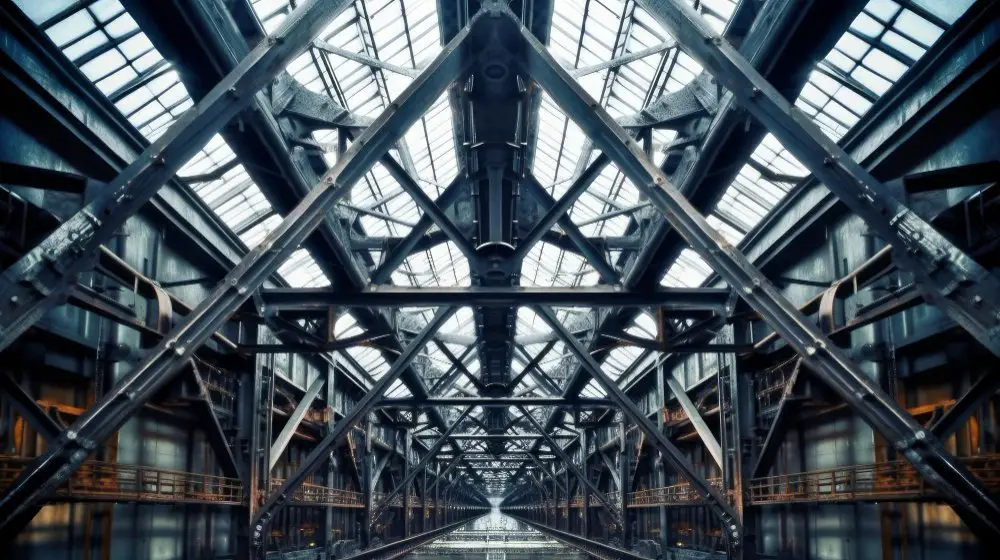Farming is not just a profession; it’s a way of life. Farmers have toiled tirelessly for generations, putting in their hearts and soul to ensure a bountiful harvest and a sustainable future. As the agricultural industry evolves, so do the demands placed upon it. One critical aspect of modern farm operations is the need for efficient and functional structures that can withstand the test of time. Enter Steel Ag Buildings – the perfect solution to meet the challenges of today’s farming landscape.
The Advantages of Steel Ag Buildings
1. Durability and Strength
Steel Ag Buildings are renowned for their exceptional durability and strength. Unlike traditional wooden structures, steel is not susceptible to rot, pests, or decay. It can withstand harsh weather conditions, from scorching summers to frigid winters, and is even engineered to endure seismic events. This makes steel buildings a reliable and long-lasting investment, saving farmers from constant repairs and replacements.
2. Versatility and Customization
Every farm is unique, and so are its requirements. Steel Ag Buildings offer unparalleled versatility and customization options. Whether you need a metal hangar building for machinery storage, a livestock shelter, or a hay barn, steel structures can be designed to suit your specific needs. With an array of sizes, shapes, and features available, farmers can optimize their building layout for maximum efficiency and functionality.
3. Cost-Effectiveness
In the competitive world of agriculture, managing expenses is crucial for sustaining profitability. Steel Ag Buildings offer a cost-effective solution compared to traditional construction methods. Their quick assembly and minimal maintenance requirements reduce labor and upkeep costs, making them a wise investment for any farm.
4. Sustainability and Eco-Friendliness
As environmental consciousness grows, farmers are seeking eco-friendly alternatives for their infrastructure. Steel Ag Buildings are constructed from recyclable materials, making them a sustainable choice. Additionally, their energy-efficient design allows for better insulation, reducing heating and cooling expenses while minimizing the farm’s carbon footprint.
Tips for Designing an Efficient Steel Ag Building
1. Assess Your Farm’s Needs
Before embarking on any construction project, assessing your farm’s specific needs and goals is essential. Take the time to evaluate what functions the steel building will serve, the space required, and any future expansions you might need to accommodate. This evaluation will form the foundation for designing a functional and efficient structure.
2. Work with Experienced Engineers
Designing a Steel Ag Building is a significant investment; you want it done right. Collaborate with experienced engineers or reputable steel building manufacturers with a track record of creating successful structures for agricultural purposes. They will understand the unique requirements of farmers and can offer valuable insights and expertise.
3. Optimize for Natural Light
Natural light enhances the visual appeal of a structure and reduces the need for artificial lighting during the day. Incorporate large windows, skylights, or translucent panels in your design to maximize natural light penetration. This benefits the environment and creates a healthier and more productive atmosphere for livestock and farm workers.
4. Prioritize Ventilation
Proper ventilation is critical for maintaining a healthy environment inside agricultural buildings. Good ventilation reduces moisture buildup, prevents the growth of mold and mildew, and ensures a comfortable space for livestock. Incorporate features like ridge vents, louvers, and roll-up doors to facilitate natural airflow throughout the building.
5. Invest in Quality Insulation
Insulation plays a vital role in regulating the temperature inside Steel Ag Buildings. Quality insulation can keep the interior comfortable and protect sensitive crops and equipment during hot summers and cold winters. Invest in high-grade insulation materials to ensure optimal energy efficiency.
6. Consider Future Expansions
A successful farm is always growing and evolving. When designing your steel building, consider future expansions and potential changes in your farm’s needs. A modular design allowing easy expansion can save you time and money.
7. Choose the Right Location
The location of your Steel Ag Building can significantly impact its efficiency. Select a site that provides easy access for machinery and livestock while considering factors like wind direction, sun exposure, and drainage. A well-planned location can make daily farm operations smoother and more productive.
Conclusion
Steel Ag Buildings have revolutionized the way modern farmers approach infrastructure design. Their durability, versatility, and eco-friendliness make them an excellent choice for optimizing farm operations. Carefully assessing your farm’s needs, working with experienced professionals, and incorporating smart design features, can help create an efficient and functional steel building that will stand the test of time.
For top-quality Steel Ag Buildings and metal hangar buildings, trust the experts at Coastal Steel Structures. Visit Coastal Steel Structures to explore their wide range of customizable options and start building the farm of your dreams.


















